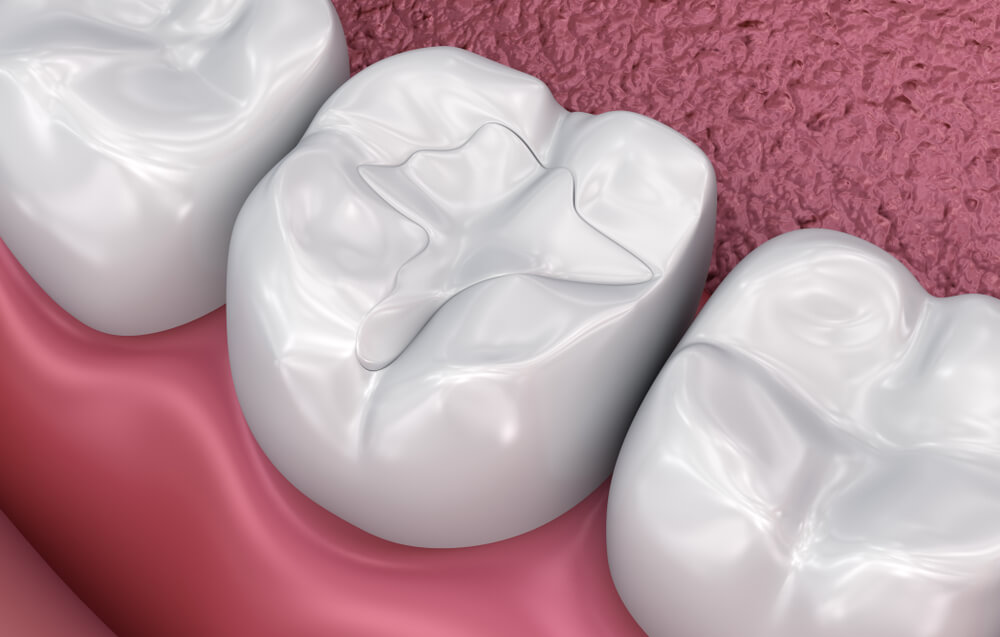Tooth decay is the leading reason people seek dental care outside regular visits. Regardless of age or background, it remains a prominent cause in the United States. Dental technology has been advancing, providing more affordable and effective methods for treating this condition. Earlier approaches involved the use of an amalgam metal for fillings. In addition to being visually unattractive, they were also found to reduce the strength of the remaining dental tissue by as much as 50%.
Did you know…
that composite fillings allow dentists to preserve more of the natural tooth structure? This is because composite materials chemically bond to the surface of the tooth like an adhesive. The process takes slightly longer to complete than traditional amalgam fillings, but patients can preserve more of the natural portion of the teeth while enjoying a restoration that is discreet and understated.
These factors have made composite resins one of the preferred approaches for fillings. Amalgams are being slowly phased out in the US and have been phased out completely in most European countries. This is due to the toxic materials that amalgam fillings contain and the expense of meeting the disposal requirements for amalgam materials.
Why Dentistry Done Right Provides Composite Fillings
When correcting dental decay, it’s essential to our patients that it’s accomplished in a lasting and discrete manner. Amalgam wasn’t truly suitable for this purpose. Not only does its silvery color make it difficult to mix, but it also reduces the strength of the remaining dental tissue. Composite fillings address both these concerns effectively.
The composite material used in creating these fillings can be tinted to match the color of your teeth. It’s malleable and easy to form into a shape that mirrors your natural dental structure. Another concern with amalgams is that they’re made of toxic materials that have the potential to leach into our teeth, causing discoloration. Composite materials are hypoallergenic, durable, and non-toxic.
These and other factors provide composites with the following benefits:
- Composite resin can be contoured and colored to match your natural appearance
- Less material needs to be removed in preparation for placing the composite resin
- The resin used contains fluoride, which works to strengthen neighboring material
- Amalgam tends to transmit temperature easily, increasing cold and heat sensitivity
- Some amalgam patients experienced metal allergies. This isn’t a concern with composites.
Frequently Asked Questions
Am I a candidate for tooth-colored fillings?
If you have a cavity, broken tooth, or a deteriorated filling, you may be a candidate for a tooth-colored filling. Schedule a dental consultation to find out if composites are right for you.
What should I expect if my dentist decides a composite filling is right for me?
During your visit, your gums and teeth will be anesthetized with a local anesthetic near the site of the filling. Once the area is numb, the decayed or damaged portion of your teeth will be removed to make room for the new tooth-colored filling. A resin will be placed over the area and cured with a hand-held light for less than a minute. The new filling will then be shaped and polished before the procedure is complete.
What type of post-treatment care is required after getting a composite filling?
Composite fillings are cured with light at your dentist’s office. You should be able to return to normal activity and oral care immediately after your visit. It’s normal for treated teeth to experience some sensitivity to hot and cold in the days following treatment, but sensitivity that persists beyond a week should be reported to your dentist.
Composite Fillings at Dentistry Done Right
Composite resins are also easier to apply. They’re made of a combination of glass, plastic, and ceramic particles, resulting in a durable material. This material starts out being easy to shape and form. Still, it hardens into a material that can withstand significant wear and tear. When Dr. Rhee places the material, it will be exposed to a curing light as each new layer is added. Once your filling has been completed, Dr. Rhee will finish shaping, polishing, and sealing it for the best results.

